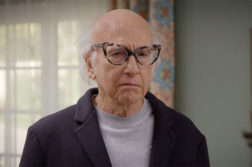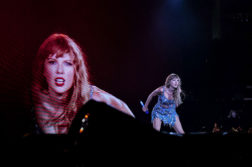SBS’s Go Back to Where You Came From is intended to be an intervention into current debates on asylum seekers in Australia with the explicit aim of complicating the assumptions and contradicting the myths on which government policies are based.
The central claim of the show is that once people with hostile attitudes towards asylum seekers are made to undergo or view the "reality" of the refugee experience, they will be forced to confront the contradictions of their own stance in defence of harsh border protection policies. The participants’ experience, edited for effect, is meant to lead to the transformation of the viewer who supports harsher protection policies. For those already against harsh policies, the exposure and interrogation of racist attitudes is intended to bolster their resolve, and give them the tools with which to continue the debate.
But to what extent do these personal transformations lead to the intended transformations in the political debate?
The power of the confrontations depicted in the first series of Go Back was undeniable. Cronulla lifesaver Adam Hartup and retired Inverbrackie social worker Raye Colbey deeply empathised with the refugees they encountered and dramatically shifted their views on border protection policies. But did this have any impact the dominant border protection mentality promoted by the media and the government?
Since the first series of Go Back aired, Chris Bowen and Tony Abbott have shifted their rhetoric to one of compassion and saving lives. The "threat" is no longer necessarily the "boat-person" or the "queue-jumper". Instead, it is the "smuggler" who has duped the naïve and unsuspecting innocents into risking and often losing their lives on boats. Despite this shift in discourse, in recent weeks we have seen a return to the Howard-era policies of offshore processing on Nauru and Manus Island. There is, in other words, no guarantee that prompting sympathy with asylum seekers will result in the intended policy shift.
The second series conspicuously failed to challenge the logic that underpins the claim that offshore processing and remote long-term detention are necessary to prevent asylum seekers drowning en route to Australia. At the end of series one, Hartup emphatically concluded that if he were put in the position of asylum seekers in Malaysia, he would get on a boat. At the end of series two, Angry Anderson, who underwent the most dramatic shift through the series, still maintained that asylum seekers must be stopped from making journeys by boat.
The makers of Go Back undoubtedly set out to present a program accessible to a wide audience and emphasising what they believe are the key issues. But such an approach risks a loss of nuance. The program’s format of sending a group of Anglo-Australians on similar journeys to those taken by asylum seekers is clever and makes for dramatic and compelling TV. But it ends up perpetuating many of the problems it seeks to challenge. Non-English speaking and Indigenous people and cultures are whited out, lending support to the idea that it is white Australians who should decide who comes here and the circumstances in which they come. What would it mean to have an Aboriginal person tracing the footsteps of a Hazara refugee?
This format also suggests that a group of conspicuously white Australians, chaperoned by ex-CIA agents and armed guards, on a whirlwind week long holiday can in fact expose the "reality" faced by undocumented migrants. Such a reality is partial at best.
Furthermore, does this format of white Australian participants needing to see the conditions in Kabul or Mogadishu for themselves, not validate official suspicion of asylum seeker claims? This approach to "reality" is not dissimilar to that adopted immigration department officials who steadfastly refuse to accept asylum seekers’ claims of the dangers they face, in favour of Department of Immigration country assessments. This racist suspicion is also what justifies the need for detention in the first place, so we can ascertain identities and conduct health checks to ensure "the terrorists" aren’t sneaking sleepers in on boats or that we are not overrun by a TB epidemic.
There is also a disturbing concern that the Go Back format effectively requires the performance of trauma for our entertainment. In scene after scene "real refugees" are asked to tell their stories and articulate their traumas in detail to "the Australians", as the narrator calls them. There is no shortage of close-ups and long shots of people obviously in distress as they recount these events, while the participants are positioned as either sympathetic listeners or suspicious interrogators of their claims.
Go Back never questions whether the people they interview feel able to tell their stories in a room full of strangers, with a camera crew looking on.
Nor does it seem to question the ethics of calling on people, including children, to repeatedly perform their traumas for public consumption. In the final episode of the second series Imogen Bailey takes other contestants to task for questioning a women on camera about her experiences of rape and sexual violence. This moment is revealing, indicating the show’s failure to explicitly question the effects of being continually asked to perform one’s trauma in order to prove one’s status a "genuine refugee", or for the transformation of those who would judge asylum seekers.
Go Back definitely has strengths. Its format powerfully poses the full scope of asylum seeker journeys. The passage of the participants through dangerous and challenging situations in refugee countries of origin, through various transit destinations, before the final leg by boat undermines the common myths about why asylum seekers don’t travel with papers and the idea of a refugee queue. It also graphically confirms that asylum seekers contemplating boats journeys have no alternative.
Showing the distances travelled, the diversity of global routes taken and resilience in the face of constant threat, returns a powerful agency to undocumented migrants. This is in place of their usual portrayal as immobile victims: trapped behind razor wire, disciplined or resistant, at the mercy of the state. This starts to move the debate away from patronising politics of victimhood towards an acknowledgement of the mobile power of people to control their own lives and destinations. It also raises the question of why so few asylum seekers and refugees have voices in the debate over migration and border control.
Go Back may offer a means of intervening in the politics of "compassion" and deterrence being used to justify the return to processing on Nauru and Manus Island. It leaves genuine viewers with a much better sense of the situations asylum seekers confront and negotiate and the risk of death and violence they face throughout their journeys. And of course it’s great watching Peter Reith squirm.
But the movement must do more than this. Behind the razor wire of detention centres and the tragedy of drowning deaths lie deeper logics that cast asylum seekers as a threat to national security to be treated with suspicion and designated illegal, and which presume the State’s right to decide what does and doesn’t amount to a legitimate reason to move. These logics must be broken and replaced with notions of self-determination and dignity that permit people to make their own decisions on whether or not to move, when and to where.
Donate To New Matilda
New Matilda is a small, independent media outlet. We survive through reader contributions, and never losing a lawsuit. If you got something from this article, giving something back helps us to continue speaking truth to power. Every little bit counts.



